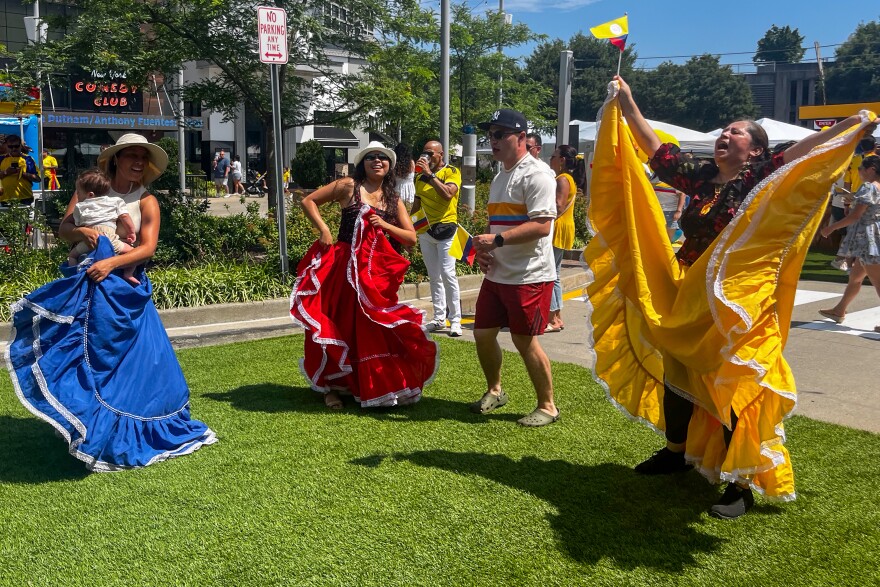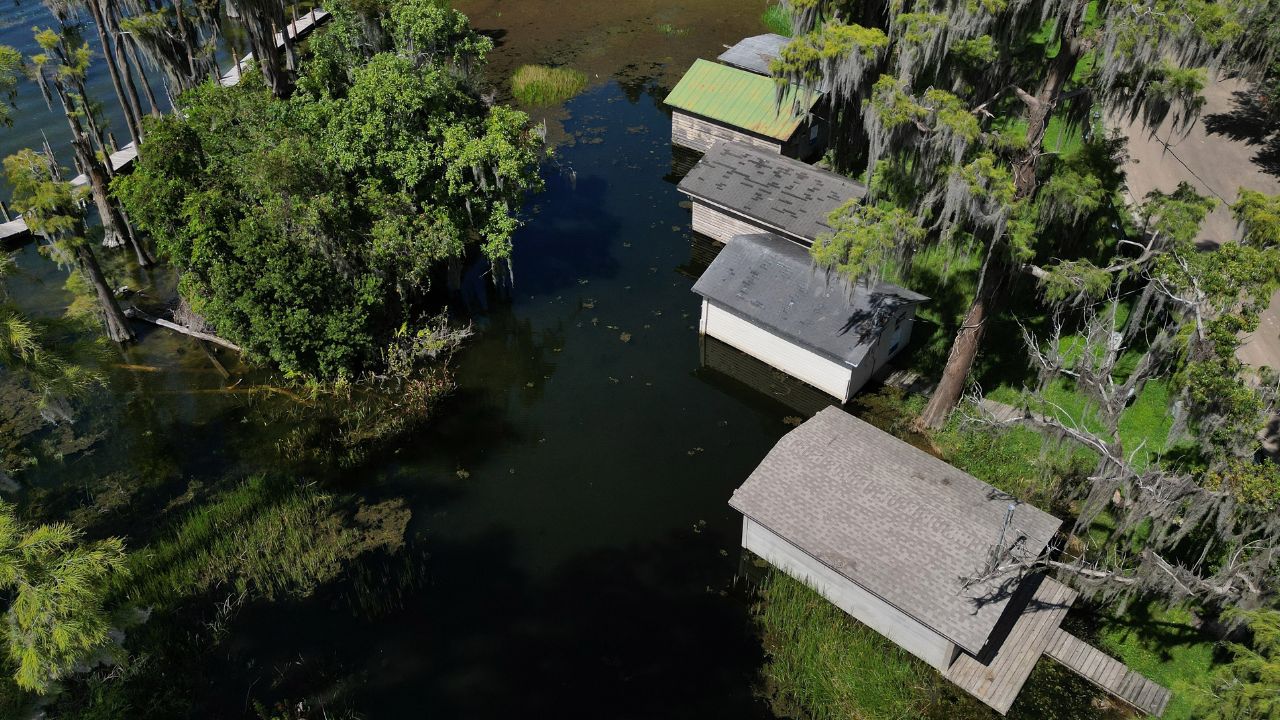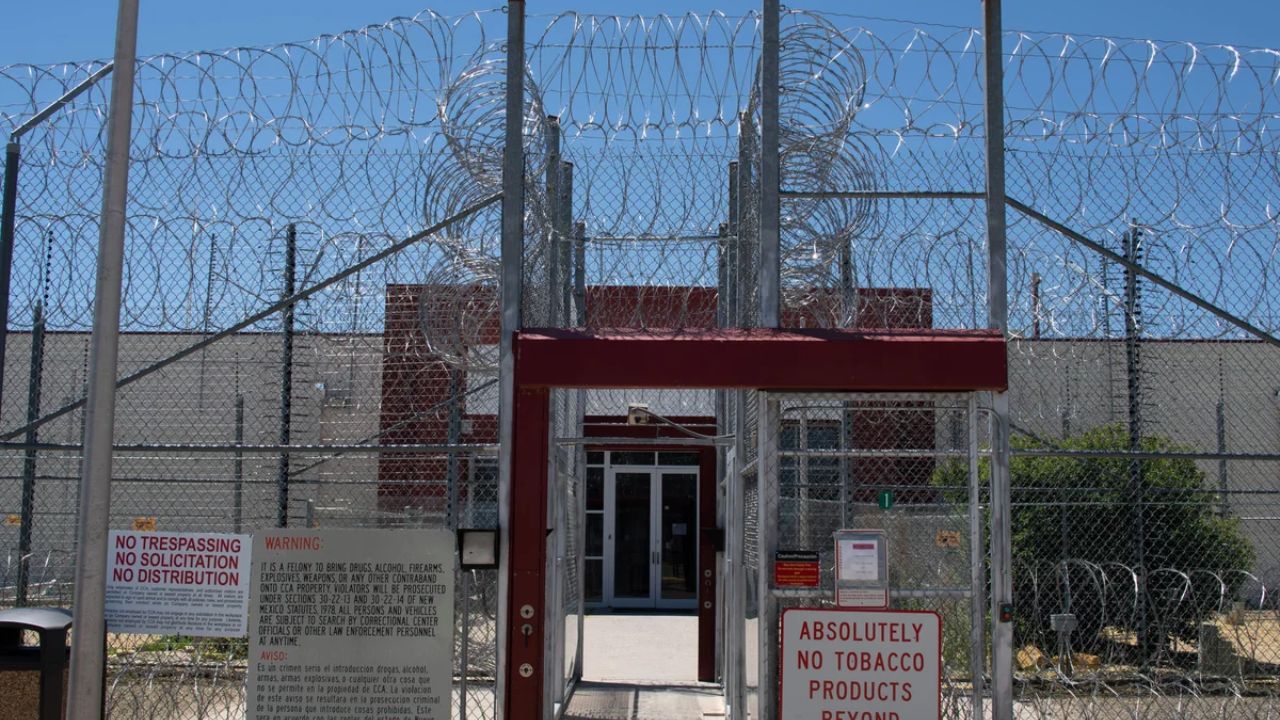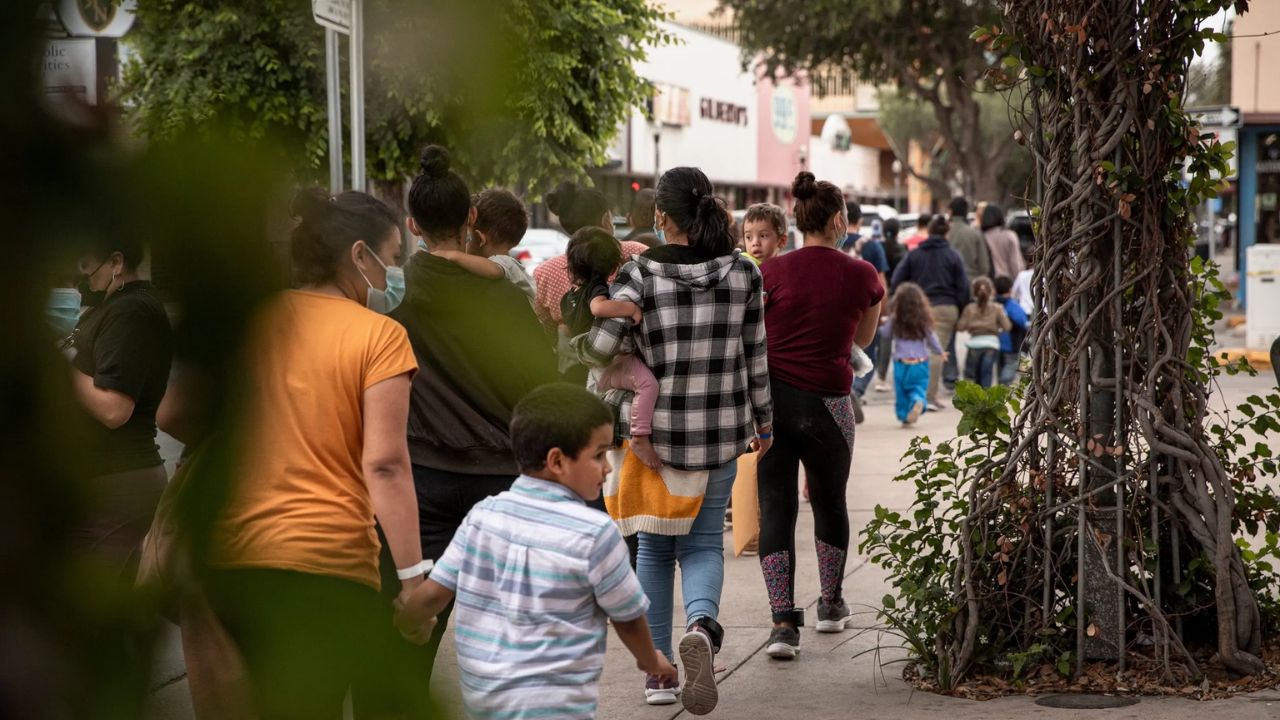Read in English.
Together with her two daughters, Cielo Urrego (centro izquierda) and Gina Bohorquez (izquierda), as well as her brother and niece, Elsa Bohorquez (derecha) dances to the beat of the vallenato, a Colombian folk music genre. The family traveled from Bridgeport to Stamford to celebrate Colombia’s independence day. “Although I have to work [in the ma ana], I’m here to enjoy myself,” Bohorquez said.
We find Elsa Bohorquez in the commercial center of Stamford Town Center. As she dances to the beat of the vallenato, a genre of Colombian folk music, Luce has a long, amarilla dance that reverberates. She is accompanied by her daughters, Gina Bohorquez in an azure falda and Cielo Urrego in a red one.
As they pass one another, it seems as though the Colombian band would be dancing with them.
Elsa Bohorquez confirms that Vengo is celebrating the D a de la Independencia in Stamford today. I’m going to rumbear even though I have to work [in the ma ana].
Colombians celebrate the 20th of July as the day of Colombia’s independence, which marks the start of the war against Spain and the date of the 1810 uprising in the capital city of Bogot. With the independence of Nueva Granada, the modern-day Colombia, in 1819, this war came to a conclusion.
Bohorquez celebrated the Colombian Carnaval by drinking wine with his family from Bridgeport. Following the round robin of their first edition, the Latin dance company Ballet Folklorico de las Américas (BfAmericas) organized the event.
The director of the baile compa a de baile, Paola Garcia, stated that the organization is based in Stamford and has about two employees.
“Whenever we come here, we always hope to find Colombian things, like Colombian music or Colombian celebrations, but we don’t have anything,” Garcia said. As we think: Good, we have this experience. Amamos a Colombia. We cherish our culture. We are a dance group, so why don’t we do it together?
According to the statistics, Colombians make up more than 5% of Connecticut’s Latina and Hispanic population. Garcia recognizes the occasion as a chance to celebrate culture.
We hope that others understand [this], that not only Colombians but also Latino communities are really happy and have a lot to offer, not just the pride they have over us, says Garcia. We want to break through these stereotypes and show them how beautiful and resilient our people are.
According to Garcia, the event also serves as a chance for Colombians in Connecticut to expand their community. BfAmericas hopes the carnaval will become an annual event.
We truly want to convey to the Colombians that we are together as a community, says Garcia. We are able to build that social structure. Because it is a little difficult to be away from home and the country.
Discovering Colombia in Connecticut
During the carnival, J.D. Ospina presents a traditional Colombian patio game that was created in his painting class for students from Stamford’s public schools.
The game of sapo or rana appears to be similar to elskee-ball. A madera caja with ranuras on the delanter side and agujeros on the upper side is required for jugar. The goal is to launch anillos at the agujeros and score points based on the caigan ranura.
According to the same report, the project was well received by many Latino students in Ospina.
It was significant for his family. They knew it was something important because their family had done it when they were little. According to Ospina, this is a component of our identity as South Americans and Colombians: our ability to preserve our culture and all we do.
By sharing their Colombian culture with the local community, BfAmericas grants them a certificate of recognition during the carnival.
In the multitud, Erika Ayala sang freely and with all of her heart, accompanying ando the song that resonated from the scene. Being surrounded by so many Colombians, with traditional music, games, and comidas, evokes some nostalgia.
Ayala said, “Extra o el vallenato con el que crec.” Extra of the arracachas and chontaduro. Extra o la alegra, la gente y su felicidad. Extra o todo.
Even if Connecticut isn’t their home in the same way as Colombia, the carnaval helps fill that gap.
According to Ayala, the carnaval allows one to feel free. I was thrilled to hear a vallenato and to see that everyone understood. I saw you at home.
Yadira Velasco, Ayala’s mother, also sent a message asking how she would feel if she were at home.
“The atmosphere and the environment are completely different,” he said. “Es bonito.
How is life in Colombia?
Jos Sanchez appears in the ataviado carnaval with a traditional sombrero and a ruana, a Colombian poncho made of lana.
“We are supporting these events,” Snchez wrote in a message addressed to his Colombian compatriots, “because these events open doors for everyone [Latino].”
Cindy Castillo, his sister, was going out with him, along with a Colombian football cap and his own dark umbrella.
As Colombians and members of the Hispanic community, it is crucial that we support one another, especially in light of the unfortunate circumstances in which immigrants currently reside in this country, Castillo says.
They want to encourage Colombians to stay united, according to Snchez and Castillo.
“Y que viva Colombia!” they exclaimed to a boy. Cheers to a long life in Colombia.






